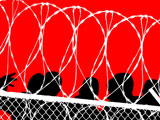Robert K. Ackerman
June 4, 2016
The CIA Accelerates Innovation
A new directorate focuses on digital technologies across the agency’s spectrum of operations and analysis.
The CIA’s newest directorate consolidates several technology business units into one hub organization focused on deeply embracing innovative approaches and capabilities throughout the agency. As part of an effort to make digitization commonplace in both operations and analysis, the CIA also will work with industry to speed up the adoption of cutting-edge technologies. To start, the agency will add some of the latest data capabilities in the infosphere, and then it will nurture new technologies as they emerge from laboratories in government and industry.
Known as the Directorate of Digital Innovation, or DDI, this organization is concentrating on inherent capabilities at the core of agency activities, as opposed to generic intelligence functions. “Information is the agency’s lifeblood,” says Andrew Hallman, who leads the unit as deputy director of the CIA for digital innovation. “Our responsibility here is to nourish and develop that digital bloodstream in which we execute the mission.”
The main driver for forming the directorate was a recognition that the CIA’s digital environment pervaded all its business areas, and the agency needed to more deeply embrace technical approaches and capabilities throughout those areas, according to Hallman. Yet some of the agency’s most capable elements lacked the digital acumen to exploit new technologies, so that task needed to be consolidated in a hub organization.



